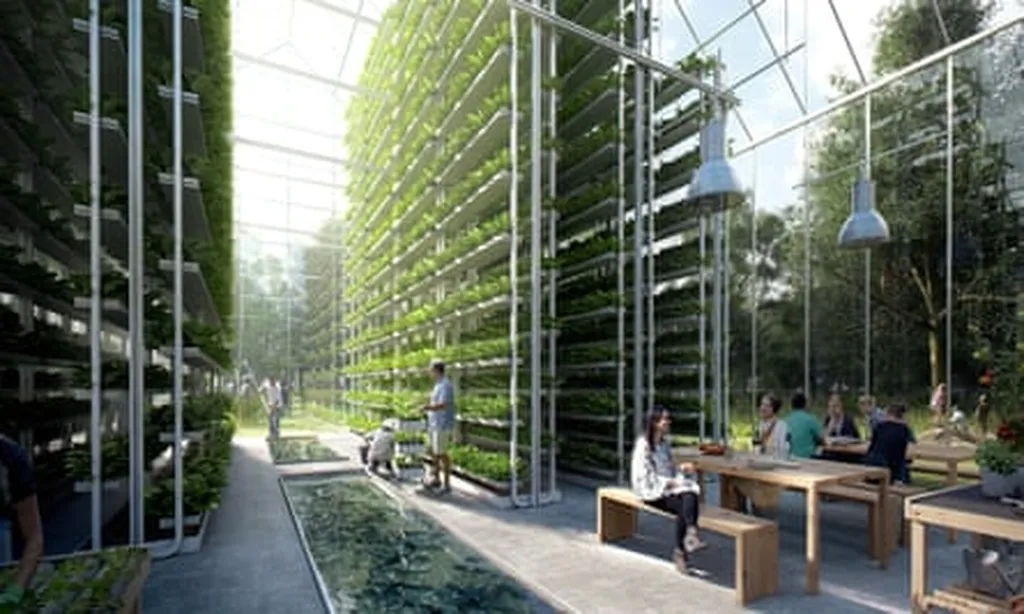Agriculture in the United Kingdom is entering a new era in 2025, as vertical farming shifts from niche experimentation to a mainstream solution for food production. According to the latest industry projections, UK vertical farms are expected to increase leafy green yields by up to 230% per square meter by the end of the year—a figure that underscores the technology’s potential to reshape how and where food is grown.
This surge in productivity comes at a critical juncture. Traditional farming in the UK faces mounting pressures: unpredictable weather disrupts planting and harvest cycles, soil degradation threatens long-term fertility, and urban expansion continues to shrink available arable land. Meanwhile, consumer demand for locally sourced, pesticide-free produce is rising, alongside national commitments to slash agricultural emissions by 2040. Vertical farming offers a tangible response to these challenges by decoupling food production from many of the constraints of conventional agriculture.
The yield gains stem from a combination of precision-controlled environments and advanced cultivation techniques. Vertical farms stack crops in climate-regulated layers, using hydroponic or aeroponic systems that deliver nutrients directly to plant roots without soil. LED lighting, tailored to specific wavelengths, accelerates photosynthesis while cutting energy use. Automation handles planting, monitoring, and harvesting, reducing labor costs and human error. The result is a system that can produce salad greens, herbs, and even fruiting crops like strawberries at densities unimaginable in open fields—all within urban warehouses or repurposed industrial spaces.
For UK food security, the implications are significant. By 2025, over 40% of urban agriculture in the country will rely on vertical farming, according to sector analysts. This shift reduces dependence on imports, which currently account for nearly half of the UK’s fresh produce during winter months. Shorter supply chains also mean fewer food miles; a head of lettuce grown in a London vertical farm may travel just kilometers to reach consumers, compared to thousands if sourced from southern Europe or beyond. The controlled environments minimize spoilage and contamination risks, addressing food safety concerns that have plagued traditional supply chains.
Sustainability benefits extend beyond emissions reductions. Vertical farms use up to 95% less water than field-based agriculture, a critical advantage as droughts become more frequent in parts of the UK. The absence of pesticides and herbicides in these closed systems eliminates agricultural runoff, protecting local waterways. Meanwhile, the ability to grow crops year-round—regardless of external weather—provides a buffer against the climate volatility that has increasingly disrupted conventional farming. For policymakers, these attributes align neatly with the UK’s net-zero targets and broader environmental goals.
Yet the transition is not without challenges. High initial capital costs for infrastructure and technology remain a barrier for some growers, though government incentives and private investment are accelerating adoption. Energy consumption, while improving with renewable integrations, still demands innovation to ensure vertical farming’s long-term viability as a low-carbon solution. Crop diversity is expanding—with tomatoes, peppers, and microgreens joining leafy greens in commercial production—but grains and root vegetables remain better suited to traditional methods for now.
What is clear in 2025 is that vertical farming is no longer an experimental curiosity but a functional pillar of the UK’s agricultural strategy. As the technology matures, its role in complementing—not replacing—conventional farming will likely grow. For consumers, this means fresher produce with a smaller environmental footprint. For farmers, it opens new revenue streams and risk-mitigation tools. And for the UK, it represents a step toward a more resilient, self-sufficient food system in an era of climate uncertainty. The 230% yield projection is more than a statistic; it’s a signal of how innovation can redefine the boundaries of what’s possible in agriculture.

